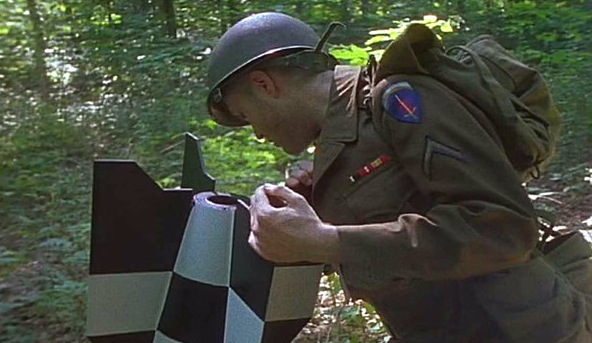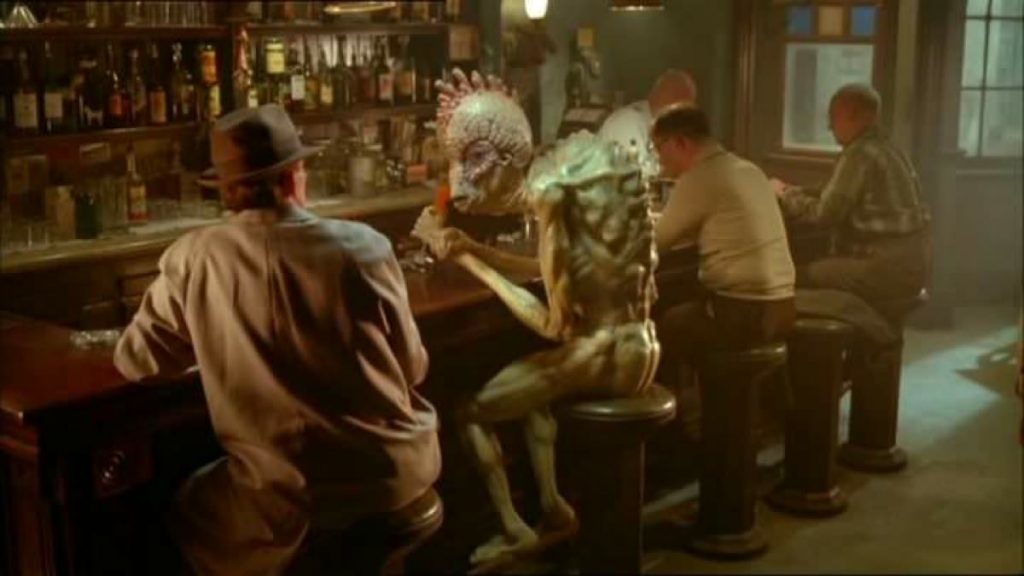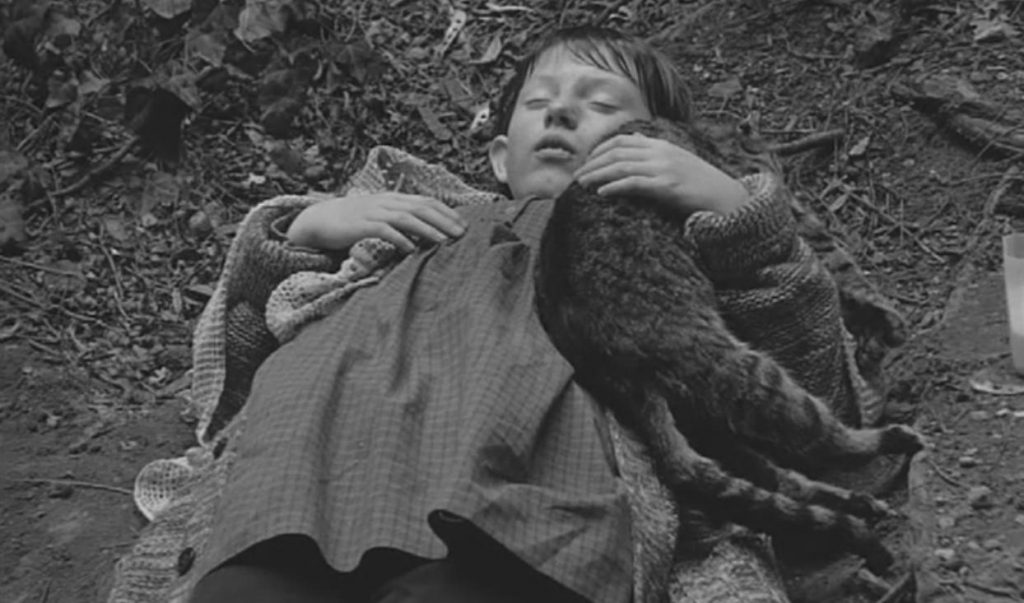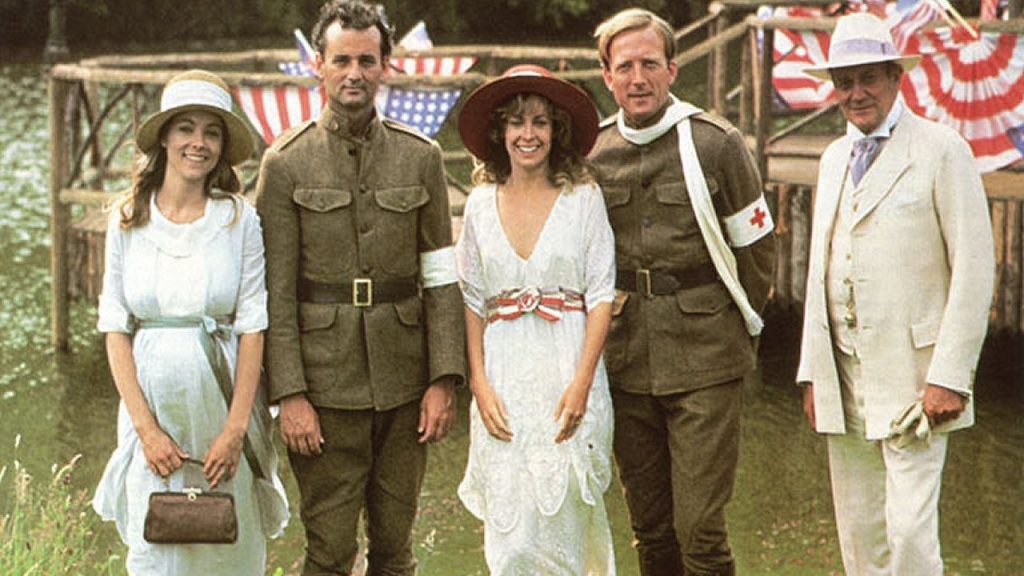At best, the feature film and the novel have been uneasy bedfellows that have never stopped commingling fluids. Often the latter can get “adapted ” into the former without much straining, but the results have as much of a chance at disappointing both the reader and the filmgoer as it does delighting either. Some books should never be made into films—for reasons that vary from unfilmable first-person voice to postmodernist tropes that purposefully obliterate the diegetic illusion that films can hardly live without. But of course these books regularly get optioned and filmed in any case, often with hopeless results. The “filmographies” of Ernest Hemingway, F. Scott Fitzgerald and William Faulkner—the holy trinity of American modernists, whose fragile words absolutely belong only on the page—are testament enough to the idea that cinema and fiction sometimes just should not bed down together. Joseph Strick turned James Joyce’s Ulysses into a movie in 1967, but arguably in name only. American filmmaker Alex Ross Perry dared to adapt Thomas Pynchon’s massive Gravity’s Rainbow into a micro-indie (Impolex, from 2009), but then again, it’s more like a brief, penny-budget daydream about the book than a filmization in any meaningful sense.
The patently unfilmable novels usually stay unfilmed—no one as yet has dared to put William Gaddis’s The Recognitions or John Barth’s Giles Goat-Boy before the cameras, and they probably won’t ever. (Steven Soderbergh, after he’d “retired,” claims to be working on a mini-series version of Barth’s The Sot-Weed Factor. We’ll see.) But sometimes, the unfilmable gets filmed and the results are magical, by some sleight of hand or textual manipulation or reconception about the novel’s narrative ideas, or sometimes by reinventing the whole thing from scratch. They’re original, in other words.
Naked Lunch (1991)
An impossibility, but David Cronenberg did it, by brilliantly conjoining the novel’s erratic fragments of doped storyline with the biography of William S. Burroughs himself. The result is a movie as much about writer’s block and creative process as Kubrick’s The Shining, but also about addiction, about the social transformations of the fifties and sixties, and about Burroughs’s tragic, drunk-accidental bar-game shooting of his common-law wife Joan in 1951. Which were actually things Burroughs wrote about at length—just not in a way anybody else thought filmable.
Crash (1996)
J.G. Ballard’s 1973 novel, about car-crash survivors and their perverted sexual obsessions, has a straight-forward plot that seems filmable at least in structure—but it’s also so horrifically depraved and outrageous that the idea of putting it on film didn’t strike anyone for decades. Cronenberg to the rescue again; his solution was to temper it, humanize it, and make it into a tragic love story.
Satantango (1994)
Bela Tarr’s near-seven-hour masterpiece—a metaphysically ominous portrait of a tiny collective-farming village somewhere in the endless Hungarian flatlands, so constantly beset by driving rain that the ground is endless mud, the buildings are rotten and the outside world is permanently kept at bay by the overflowing bogs and washed-out roads—is based on a novel by Laszlo Krasznahorkai, itself an inconclusive, suggestive apocalypse in which cosmic doom always seems to be on the verge of descending, but we’re never informed as to how and why. What’s more, it’s not chronological, but structured like a tango—six chapters forward, six chapters back. Tarr manages to capture this very literary feeling not with language, but, famously, with visual form: a seemingly endless run of massive eight and ten minute traveling shots filmed in profound and serotonin-depleting black-and-white. The film forces you to take long walks in its particular hell, and Tarr’s fluency with moving-camera compositions (and with the behavior of nature and animals) seems to be almost superhuman. You don’t just watch Satantango, you live it, with your bio-rhythms adjusting accordingly.
Adaptation (2002)
A kind of perpetual motion machine, Charlie Kaufman’s screenplay began, we see in the film itself, as an assignment to Hollywoodize Susan Orleans’s story-free non-fiction book The Orchid Thief. It’s not an easy job, and Kaufman meets the challenge by torturing (with director Spike Jonze’s help) the sacraments of orthodox moviemaking in an unforeseen way: Kaufman is his own protagonist, and the movie we’re watching is one he cannot write, until he does, sort of, with the help of a twin brother he doesn’t have, but the screenplay doesn’t actually get written as far we know, but of course it did in reality, with fictional brother Donald’s name on it, eventually spiraling the movie into exactly the preposterous mainstream idiocy the film’s Charlie Kaufman abhors, which is not to say that Kaufman himself abhors the same, because while he mocked and subverted the Robert McKee-mandated flowchart for screenwriting success, he also followed it perfectly, out of derision or desperation or insecurity or chutzpah or all of the above.
Time Regained (1999)
There have been attempts to scriptify and film Proust, an ambition that, given the size and subjective fluidity of Remembrance of Things Past, would seem to be disastrous every time. But Raul Ruiz’s version, tactfully adapting the last volume of the work, and thereby using it to index the events of entire book, is serene, gorgeous, impressionistic, and focused on Proust’s priority: not the narrative-slash-memorial materials, but the feelings aroused by memory. It may represent a tenth of the novel’s “story,” but it nails the takeaway.
The Razor’s Edge (1984)
W. Somerset Maugham’s novel is an odd fish, skewering a class of early-century American nouveau riche while circling around the spiritual search of one Great War vet, Larry Darrell, who’s absent and rumored about for most of the book. Any film version, including the Tyrone Power-starring adaptation from 1946, would, you’d think, have to put Darrell at center stage, although his character is virtually inscrutable, and his journey is entirely interior. Power demonstrated how dull Darrell could be, but this all-but-unseen version from the Reagan years puts posits Ghostbusters-era Bill Murray as Darrell, and it might be the best Larry Darrell we’ll ever have, equal parts deadpan clown, genuinely befuddled nowhere man and utter mystery; in other words, a complete person, running with his very private devils. Murray’s lostness gives the film five dimensions—is it Murray or Darrell or both running so awkwardly for the foxhole in the war scenes? Is that persistent throat lump signal the actor’s unease or the character’s? It’s the disarming details, from Murray/Darrell’s mocking seal impersonation to his cheek-press against his murdered lover’s lips in a Paris morgue (none of them from the book), that stick in the memory like a heartbreak.
The Spider’s Stratagem (1970)
What could be tougher than turning a Jorge Luis Borges “tale”—which are hardly ever stories as such, but ironic fabulations structured like essays—into a feature film? “Theme of the Traitor and the Hero” is a three-page sketch of an idea for a story, alluding to Julius Caesar and outlining a bit of revolutionary intrigue involving the faked assassination of a double-agent rebel captain—or not, as Borges freely speculates and changes context as he dawdles, suggesting that this may be one way the story will go, if he ever writes it. From this a thirty-year-old Bernardo Bertolucci, in his Elvis year, constructs an elaborate mystery about the ghost of anti-Fascist resistance haunting an Italian village, and it’s a beautiful, deeply moral masterwork—conclusive and political in ways Borges wouldn’t have liked, but which give the film majesty.
War and Peace (1967)
Sergei Bondarchuk’s six-hour Tolstoy adaptation remains one of the biggest, most expensive, most astonishingly profligate movie ever made, involving more than a quarter-million extras and resources enough to support a small nation (today, it would cost close to $1 billion). After winning a foreign-film Oscar, it’s been subsequently derided as a boring nationalist waste. Hardly: it’s Napoleonic as well as Tolstoyan, and meets the scale of the notoriously unwieldy novelhead-on. What’s more, Bondarchuk is a real image-maker, and his mega-film is constructed out of relentless traveling shots, complex mise-en-scene, baroque compositions and expressive double-exposures. The chakras of Ophuls and Eisenstein are as palpable as the startling sense of the entire USSR being placed at the film’s disposal. For the first and probably last time, the authentic scale of actual warfare becomes an instrument of cinematic power.
The Saragossa Manuscript (1964)
Jan Potocki’s 1905 Arabian Nights-esque “novel” is actually a huge, fragmented, endless matrioshka-text that has several versions, many unreliable translations, constantly rediscovered addendum, and lost chapters that may yet be found, suggesting that we may never know its final form, and that the book may never “end.” Sensibly, Polish director Wojciech Has didn’t let the infinity of the book daunt him. He scaled down the amount of sheer crazy narrative stuff on hand, and simply leaped from one concentric story-within-a-story to the next—really, mini-movies huddled within larger movies—by way of unceremonious jump cuts. All transitions are all equal and equally deceptive, and diegetic “reality” is quickly subsumed. Almost predictably, the film endured endless cuts, re-edits, losses, mis-releases, sequesterings, restorations, and censorships, and though a “final” director’s cut has been available for a few years now, it would not be shocking to find more footage or an extra reel moldering in a Warsaw closet somewhere…
Blow-Up (1967)
Julio Cortazar’s story “Blow-Up” has nothing to do with murder, or Swinging London, or a decadent fashion photog, thought it does involve a photograph taken in the park that seems to suggest, to the incredibly unreliable narrator as well as the neurotically amorphous hero, that something happened (between a woman, a boy and a black car) that he wasn’t aware of when the camera clicked. No answers are provided, all is subjectivity and Heisenberg enigmas, and so Michelangelo Antonioni and screenwriter Tonino Guerra anchored in a very real context brimming with commercial fakery and image unreliability, and devised a mystery tale hinging on the abyss between what is perceived in reality and what a photograph—or a movie—captures on film. Like Bertolucci, Antonioni simply grabbed the abstract idea and turned it into something deep-dish and profoundly new.










